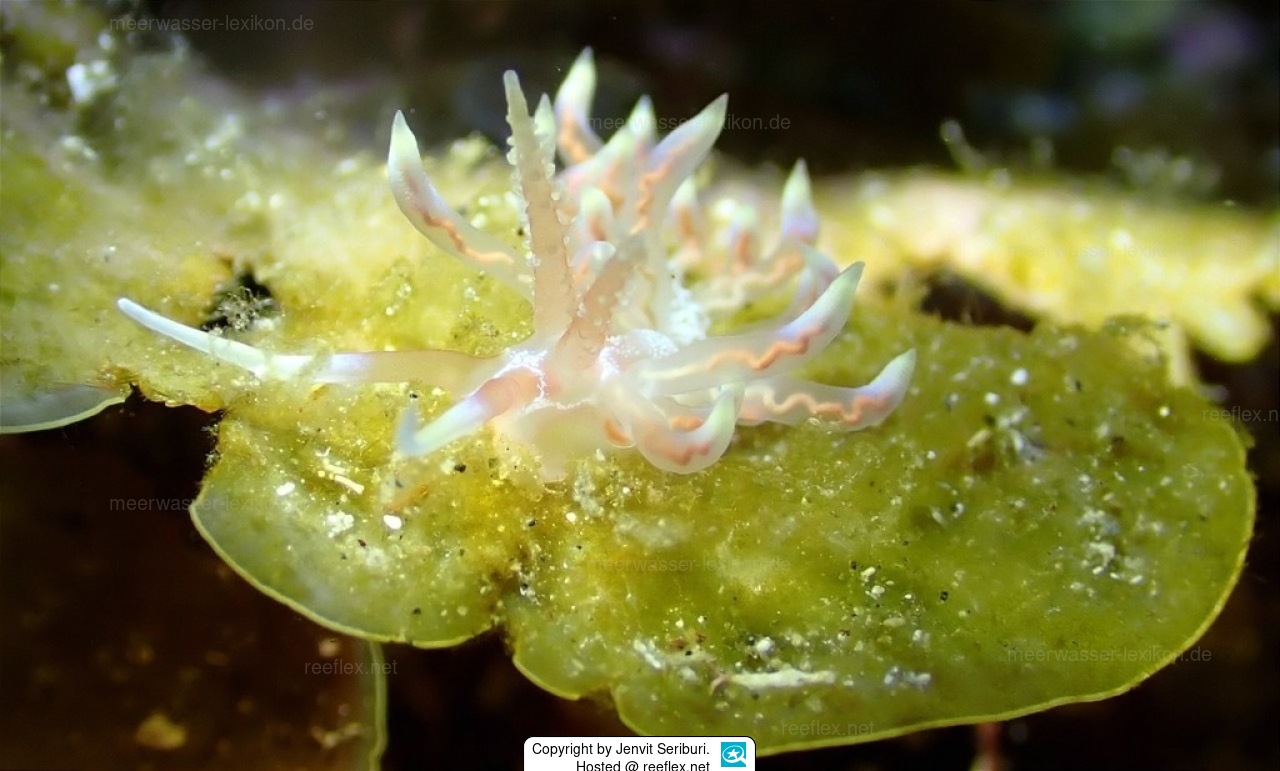Info
Phyllodesmium acanthorhinum Moore & Gosliner, 2014
Phyllodesmium acanthorhinum is a new described very attractive facelinid. The body, the rhinophores, oral tentacles, and foot is predominantly transparent with opaque white markings on the dorsum.The digestive gland is undulating and undivided within the cerata and is cream or yellow colored near the body leading to red, and then yellow at the apex of each ceras.
Feed on soft-bodied octocorals (Octocorallia).
Phyllodesmium acanthorhinum is a new described very attractive facelinid. The body, the rhinophores, oral tentacles, and foot is predominantly transparent with opaque white markings on the dorsum.The digestive gland is undulating and undivided within the cerata and is cream or yellow colored near the body leading to red, and then yellow at the apex of each ceras.
Feed on soft-bodied octocorals (Octocorallia).







 Jenvit Seriburi
Jenvit Seriburi

























